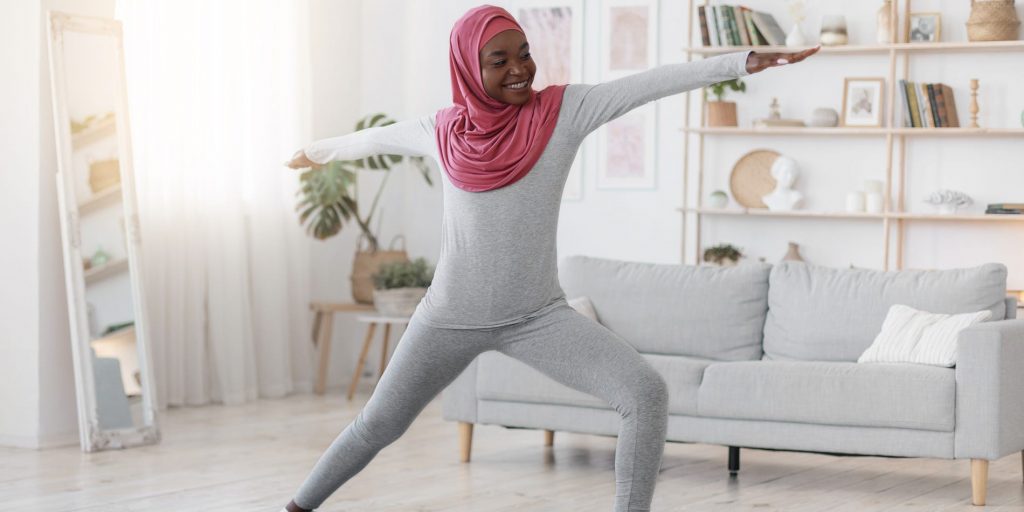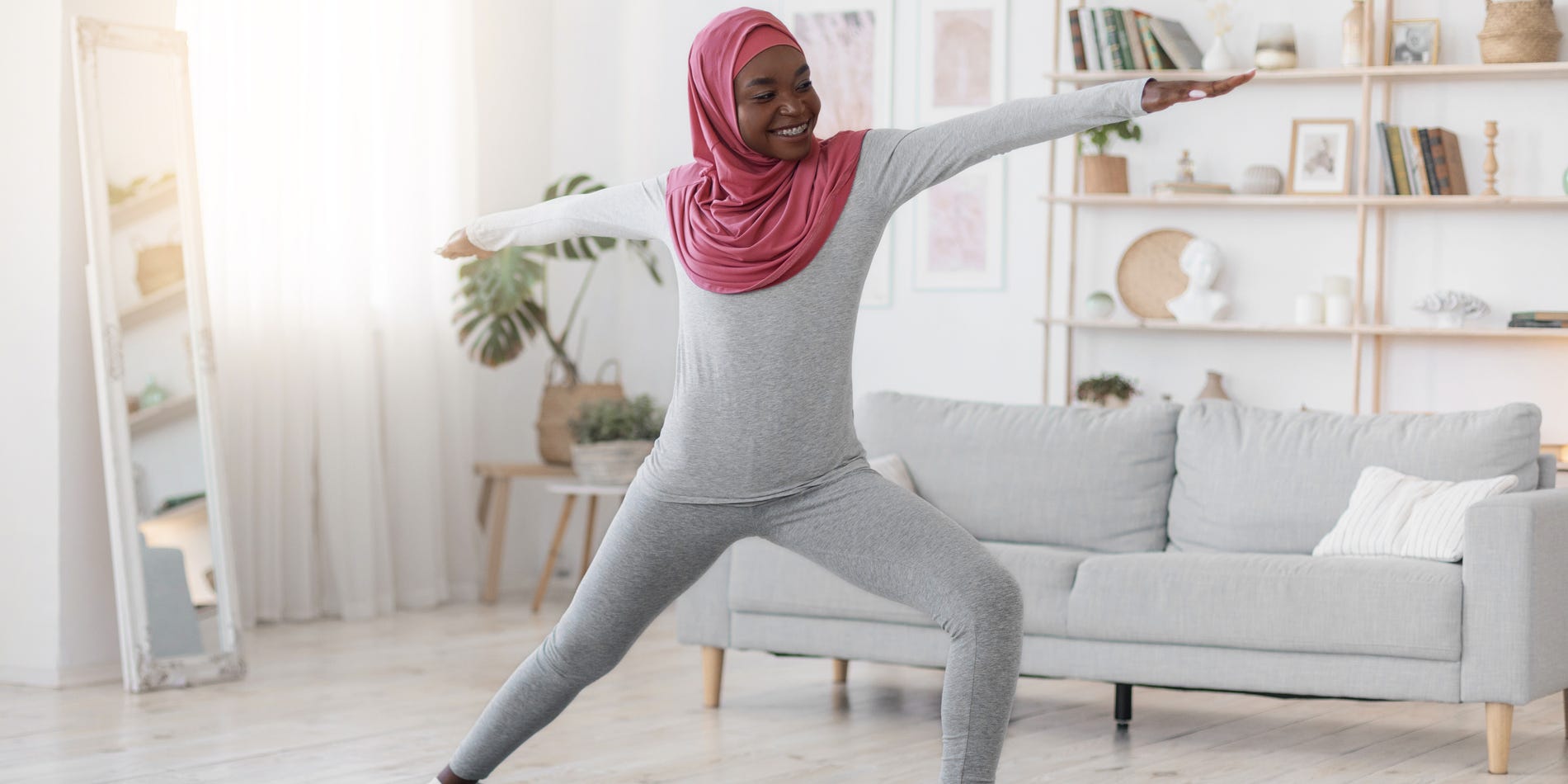
Prostock-Studio/Getty Images
- Vinyasa yoga links postures together so you flow from one pose to the next, and emphasizes breath.
- Common vinyasa poses include child's pose, downward dog, warrior II, and plank.
- Benefits of vinyasa yoga include increased strength, reduced strength, and better balance.
- Visit Insider's Health Reference library for more advice.
The word "vinyasa" in Sanskrit means arranging something in a special way. Thus, vinyasa yoga links postures together, so you flow from one to the next. It also synchronizes movement with the breath, which some other styles of yoga do not do. Vinyasa developed from Ashtanga yoga, a more traditional version of the practice.
In particular, vinyasa yoga relies on sun salutations, specific sequences that are often used to warm up the body, says Robyn Childers, a certified yoga teacher and co-founder of Welcome Home Yoga & Wellness. Instructors may also direct your gaze to strengthen mental focus, says Childers.
Generally, vinyasa yoga is a more demanding physical challenge than some other yoga styles, such as yin, which involve less dynamic movements and more stillness, says Tahl Rinsky, a certified yoga instructor who teaches through the health app Centr and at Creature Yoga.
Vinyasa yoga poses
Vinyasa is suitable for beginners if you stick with basic poses, Childers says. How often you should practice depends on your goals, but they recommend at least twice per week to notice changes. Avoid practicing on consecutive days, so your body can rest.
Here are five poses Childers recommends that are suitable for beginners. Practice the following poses one after another so you move in a fluid motion.
1. Downward dog (Sanskrit name: Adho Mukha Svanasana)
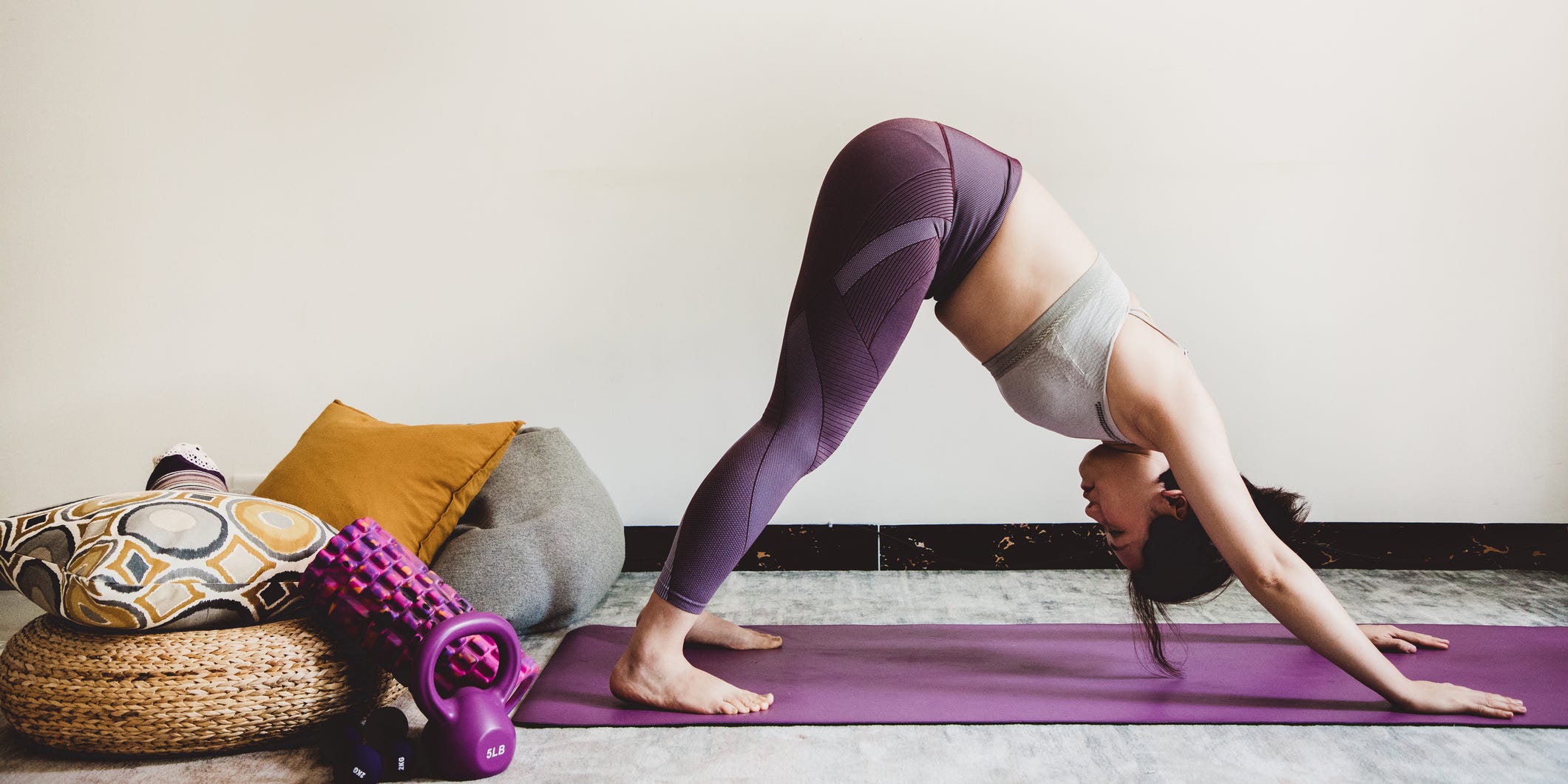
Downward dog may look simple, but it recruits muscles throughout your body.
How to do it:
- Start in table pose, on your hands and knees.
- Inhale, tuck your toes, and lift your knees.
- Exhale and press your hips high. Look between your knees or toward your navel.
This pose works your arms and legs while stretching the spine, shoulders, hamstrings, and calves. It is an opportunity to recenter your breath and calm your mind.
Modification: Table pose
2. Plank pose (Kumbhakasana)
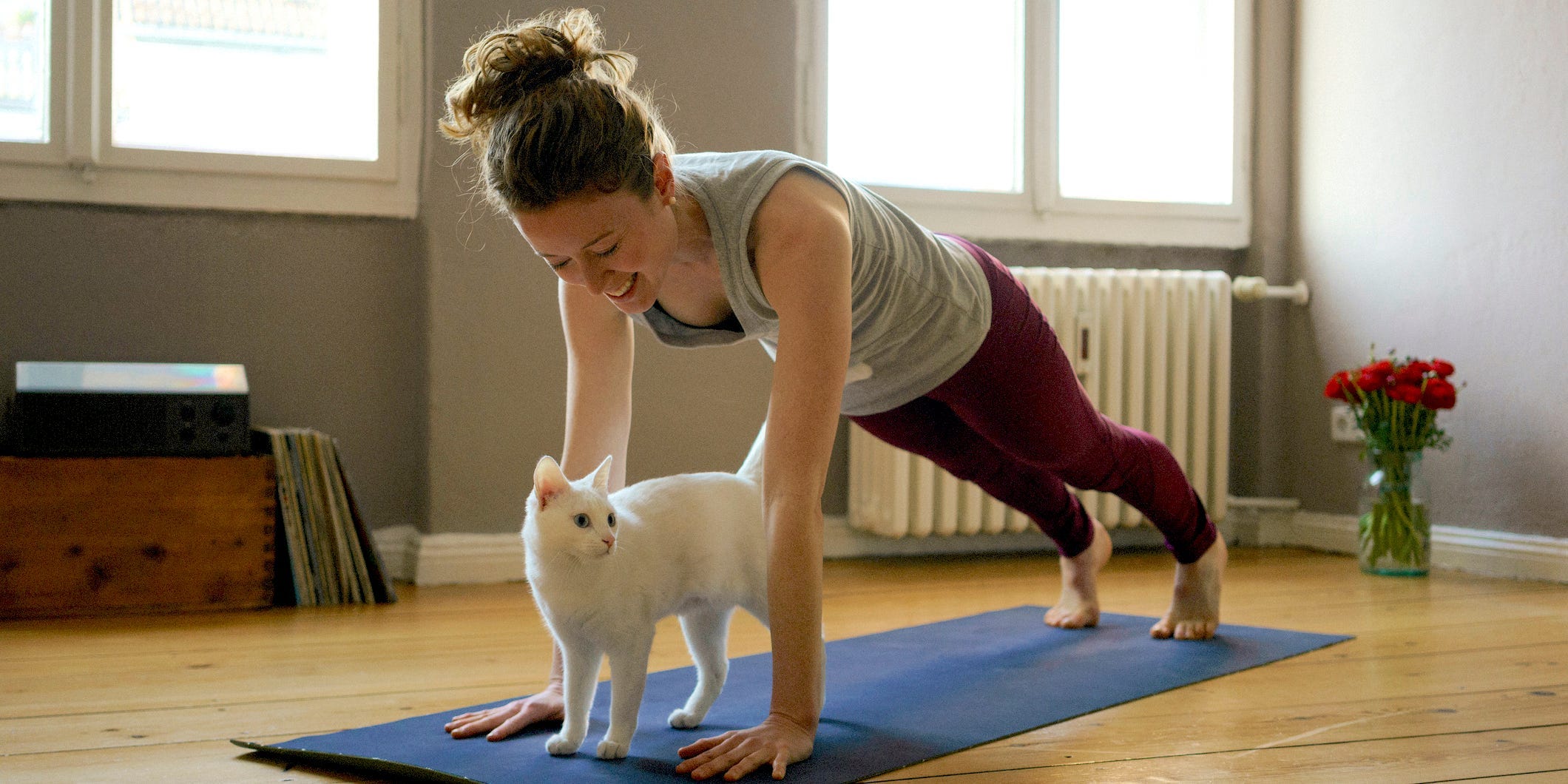
Halfdark/Getty Images
How to do it:
- Start in downward dog.
- Inhale and shift your weight forward, bringing your shoulders in line with your wrists.
- Draw your navel toward your spine, bringing your hips in line with your shoulders and your heels. Look between your hands.
Plank strengthens the back, core, and legs while building the internal heat associated with a vinyasa flow.
Modification: Table pose
3. Updog or cobra pose (Urdhva Mukha Svanasana)
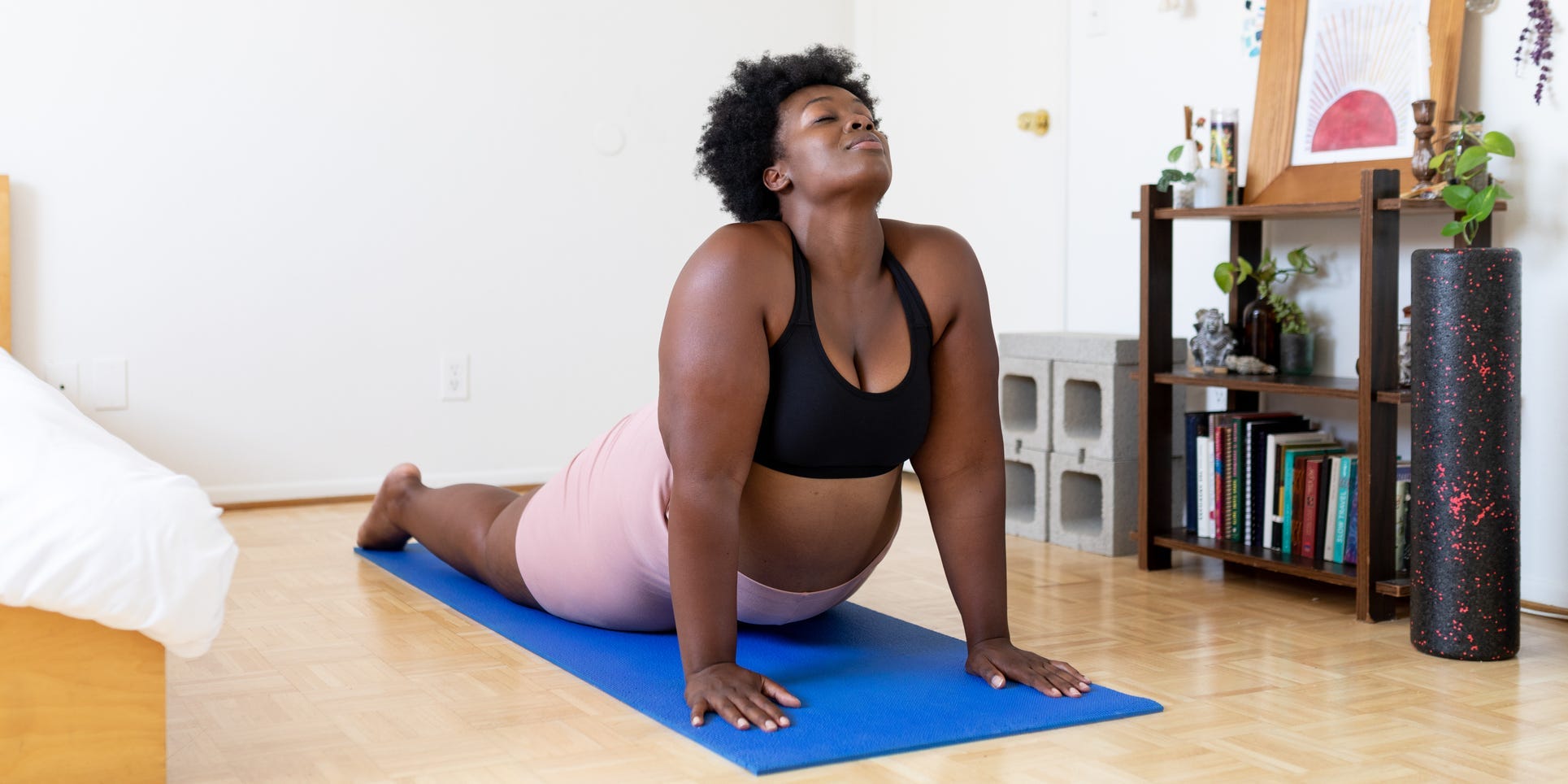
Luis Alvarez/Getty Images
How to do it:
- Start by lying on your stomach or in a low plank.
- Inhale and bring your hands beneath your shoulders, pressing into your palms, extending your arms and lifting your chest.
- Find a gentle backbend. Gaze up.
This stretches shoulders, abs, and chest, expanding the chest and releasing stiffness.
Modification: Rest on your forearms instead of your hands, or try baby cobra.
4. Child's pose (Balasana)
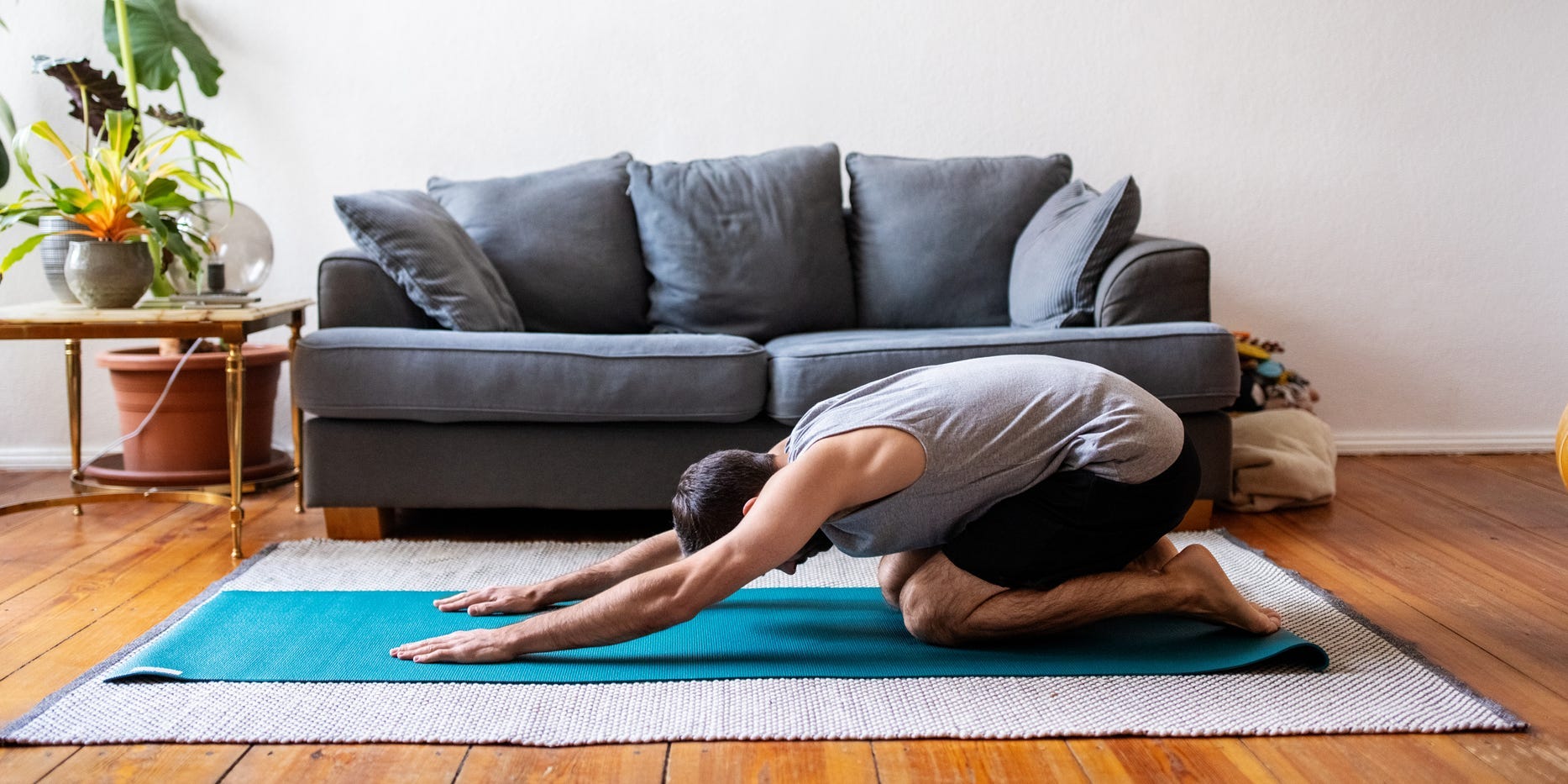
Luis Alvarez/Getty Images
How to do it:
- Start in table pose.
- Exhale and separate your knees, pressing your hips back onto your heels.
- Walk your arms out in front of you and allow your eyes to close.
Child's pose is a place of rest, recentering, and calmness. It opens the hips, thighs, ankles, and lower back.
Modification: Bring your arms alongside the body and rest your forehead and chest on a bolster.
5. Warrior II (Virabhadrasana B)
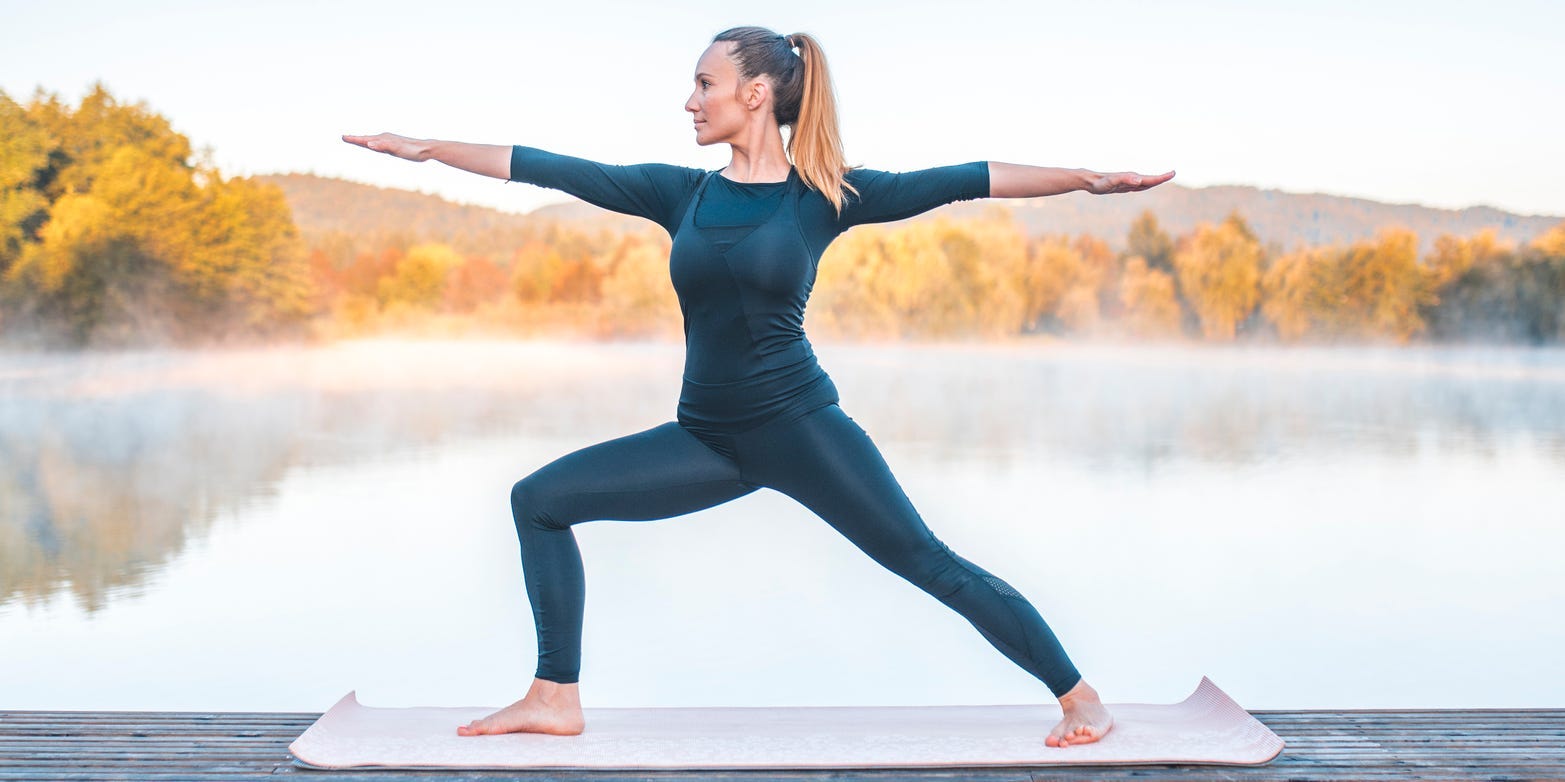
AzmanL/Getty Images
How to do it:
- Start in downward dog.
- Inhale, lift your left leg, and gaze toward your navel.
- Exhale, step your left foot up between your hands, and dial your back (right) heel down flat at a 90-degree angle.
- Inhale, bend your left knee into a lunge, and lift your heart, opening your arms to a T-shape (left arm in front of you, right arm behind you).
- Look past your left fingertips.
- Repeat these steps on the other side.
This strengthens the outer hips, quads, calves, ankles, and outer shoulders, as well as stretches the chest, groin, and inner thighs. "Warrior II trains the mind to find ease and stillness during moments of discomfort," Childers says.
Modification: Position a metal folding chair outside your left leg, with the front edge of the seat facing you. As you bend your left knee, slide the front edge of the seat under your left thigh.
Insider's takeaway
Although vinyasa can be demanding, there's always a way to modify it to meet you where you are, Childers says. To learn more, they recommend going to a vinyasa class, but you may have to try a few different studios or online videos to find an instructor that suits your needs.
What's most important is creating a consistent practice that you can stick to, and a program like Centr Align, which combines vinyasa and Pilates, might help, Rinsky says. That's because you'll be able to switch it up.
"Vinyasa yoga helps to keep the mind focused and calm, and the body strong and mobile," Rinsky says.
